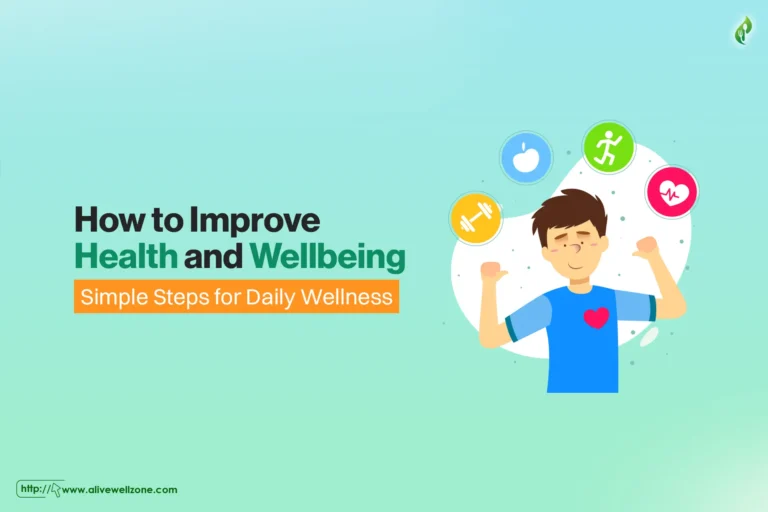
Last Updated on November 14, 2024 by Helena Akter
Does your team constantly deal with stress, anxiety, or overwhelming emotions? Do they find it hard to maintain a healthy work-life balance? If so, it’s time to prioritize mental well-being for you and your team.
Often, mental health is overlooked, leading to burnout and decreased productivity. That’s why creating a wellness program that boost mental health is vital for personal and professional growth.
Today, you’ll learn about simple wellness activities and programs designed to improve mental health. So, get ready to feel calmer, happier, and more energized!
What are Employee Wellness Programs?
Employee wellness programs are efforts by employers to boost their workers’ health and happiness. A 2022 survey by the Kaiser Family Foundation found that —
- Most large U.S. companies (85%) with health benefits also have wellness programs for employees and their families.
- Around half of the small companies (48%) and two-thirds of the larger ones (65%) give employees access to health checks or biometric screenings.
- Nearly half of the large companies (45%) and about a quarter of the small ones (24%) offer biometric screening opportunities.
- More than half of the large companies (55%) and 40% of small businesses with health benefits provide health risk assessments.
- Weight management programs are more common in large companies (65%) than in small ones (39%).
- Smoking or tobacco cessation programs are offered by 43% of small companies and 74% of large ones.
- Additionally, 38% of small firms and 76% of large ones provide programs to help change behaviour or lifestyle.
What Components Should a Workplace Wellness Program Include?
Here are the major components that wellness programs in the workplace must have —
- Physical Wellness: Improve overall health and fitness by encouraging regular exercise, such as through fitness classes or gym memberships.
- Mental Health Support: Offer access to mental health resources, counselling, and stress management workshops to nurture employees’ emotional well-being.
- Preventive Health Programs: Encourage vaccinations to help prevent the spread of illnesses and protect the health of all employees.
- Health Education: Provide information and resources to support healthy eating habits, including access to nutritious snacks and balanced meals.
- Work-Life Balance: Promote a healthy balance between work and personal life with flexible schedules and policies, thereby reducing burnout.
14 Wellness Programs to Maximize and Improve Employee Wellbeing

We checked wellness programs that boost mental health. However, after talking with multiple employers as well as employees, we handpicked the following programs. So, let’s check them out.
1. Flexible Work Schedules
Making your work hours flexible is a vital part of a health and wellness program. By asking for your opinion through surveys, companies can see how these flexible hours are helping you stay productive and happy.
It shows they value your work-life balance and give you the freedom to juggle your tasks more effectively. This leads to better involvement at work and a smoother, happier workplace for everyone.
2. Regular Check-ins
Having frequent one-on-one meetings is key to keeping an eye on your well-being at work. These meetings often include surveys where you can share your thoughts and feelings openly. This way of constant communication helps spot any problems early on and keeps everyone feeling supported.
3. Virtual Mental Health Support
One out of every five adults in the US deals with a mental health issue, but there’s only one mental health provider for every 350 people needing help. Giving you access to online platforms like Talkspace or BetterHelp can offer easy and private access to the professional help you might need.
4. Smoking Cessation Programs
Starting programs to help employees stop smoking is an active step towards improving health at work. These programs provide full support and rewards for those who join, leading to a healthier team and lower healthcare costs.
By encouraging a smoke-free place and giving help to quit smoking, companies show they care about your health, which helps both your body and mind.
5. Online Learning and Development Platforms
A Goldman Sachs report warns that automation could put 300 million jobs at risk over the next decade. Meanwhile, experts predict that 85% of the jobs that will be in high demand by 2030 don’t even exist yet.
The World Economic Forum says 60% of workers will need new skills by 2027, but only half have access to the training they need right now. Providing access to learning sites like Udemy, Coursera, or LinkedIn Learning can help you grow professionally and keep your mind sharp.

6. Birthday Vacation Day
Taking a break from work is important for our mental well-being. Imagine a Paid-Time-Off (PTO) policy where you get a day off for your birthday (or another day if your birthday is on the weekend). It’s common for people to take this day off anyway to celebrate with loved ones.
Adding one more PTO day won’t likely impact work performance much, and staffing won’t be a problem unless everyone shares the same birthday. Remember to highlight this special PTO when talking about your total job benefits.
7. Health Screenings
Regular health check-ups and assessments are key to keeping track of employee health which is a must employee wellness program. Offering insights from these checks can lead to personalized health plans for each employee. employee
This forward-thinking method helps catch health issues early and allows for specific health actions to be taken, and cuts down on healthcare expenses. It also builds a work culture that values preventive healthcare. That said, you can give a few sessions on affordable health insurance plans to help your employees.
8. Summer Recess
When the sun is shining, give your team a daily “recess” of 15 to 20 minutes. Plus, encourage everyone to step outside, stretch, soak up some sun, and chat with colleagues. This summer break is a great wellness program that boosts mental health, encourages healthy competition, or simply gives everyone a lift.
Plus, spice things up with activities like bocce ball, cornhole, or treats like fruit popsicles and lemonade. For some added sunshine, consider having outdoor team meetings or walking meetings for smaller groups.
9. On-site Fitness Center
Putting a fitness center right where you work is a solid way to encourage staying active. When you reward employees for using the gym, you’re not just promoting health; you’re showing you care about it.
Having easy access to a gym can make everyone feel better physically and help build a stronger, more connected team. You’re looking at wellness in a big-picture way, creating a healthy, energetic workplace.
10. Pet-Friendly Office
Embrace your team’s furry friends by creating a pet-friendly office. Employees will enjoy their pets’ company and each other’s animal companions’ company without worrying about leaving them at home alone.
Just make sure to consider allergies and set aside areas where pets aren’t allowed, so everyone can have a comfortable work environment.
11. Healthy Food
Offering healthy food options at work is vital for improving your team’s health and mood. When you provide nutritious meals and snacks, you’re helping everyone stay physically and mentally sharp. Plus, you can particularly offer healthy food that helps burn fat and heart-healthy foods to keep cardiovascularly fit.
Besides, healthy eating increases energy, improves focus, and maintains overall health, making the workplace a healthier place.
12. Employee Assistance Programs (EAP)
Setting up Employee Assistance Programs (EAPs) shows a deep commitment to your employees’ mental health. These programs, which include counselling and mentoring, offer a well-rounded approach to emotional support.
Surveys can ensure you’re creating a caring environment that tackles emotional challenges head-on. It improves job satisfaction and productivity, making it a win-win for everyone.
13. Team-Building Activities
Putting together team-building events is a great way to boost how connected and happy your team feels. Adding activities like fitness challenges to these events helps make health and wellness a big part of your company culture.
These activities do more than just bring your team closer—they encourage everyone to care about their well-being. Make sure these events are improving team spirit and everyone’s job satisfaction with regular checks.
14. Micro-Learning Wellness Modules
Many employees (56%, to be exact) say they don’t join wellness programs because they don’t have the time. One solution is to offer micro-learning modules. These are short, easy-to-digest tips or activities on staying healthy that you can do quickly.
You might find quick ways to relax, easy healthy recipes, short workouts, or fast mindfulness exercises and their benefits. This way, you can take small steps toward better health without feeling overwhelmed by time commitments.
What is the Main Focus of Wellness Programs?
Wellness programs that boost mental health vary from one company to another, depending on their size, their employees’ age, and their budget. However, most wellness programs focus on a few key areas —
Physical Health
There’s a saying that health is indeed wealth, but today’s fast-paced life often puts health on the back burner. The rise of digital tech has led to less physical activity, encouraging a sit-still lifestyle, and upping our chances of getting lifestyle-related diseases.
To combat this, many organizations provide gym memberships, have fitness centers at work, subsidize classes at local gyms, or organize fitness challenges to encourage a healthier way of living.
Mental and Emotional Health
In recent years, there’s been a big push for more awareness around mental health. The World Health Organization reports that mental health problems and substance use disorders have risen by 13% in the last ten years. Plus, working from home, while cost-saving and flexible, has made the mental health situation even tougher in today’s already stressful work world.

Among the ways companies are addressing mental health are offering counseling, mental health days off, seminars on stress management, and meditation classes. Some even have employee assistance programs (EAP) that provide help for substance abuse, anxiety, depression, or burnout.
Professional Development
In our fast-changing, digital world, learning new things is crucial, especially for young employees. The 2023 LinkedIn Learning Report shows that for people aged 18-34, the chance to grow their careers within a company is a big reason they pick a job.
Also, 31% of them want to learn new skills, and 30% of all workers look for jobs that are meaningful and challenging.
Companies that support employee development often offer workshops for skills improvement, mentorship, and leadership training. Some even help pay for further education or courses that can help employees move up in their careers.
Work-life Balance
On average, people spend one-third of their day working. This can make it hard to balance job duties with family, social life, and personal time. Stress from work can spill over into personal life, leading to health problems.
Work-from-home options, pet-friendly locations, daycare assistance, and eldercare assistance are all great ways to make employees’ responsibilities easier.
Financial Wellness
The American Psychological Association’s 2022 report shows that money worries are a big stressor for many people. Inflation, the state of the economy, and personal finances stress out 83%, 69%, and 66% of adults, respectively. Plus, over half of the people say money causes family arguments.

Offering financial wellness programs can ease these worries and boost overall happiness. These programs might help you with saving for retirement, getting tuition paid for, managing student loans, or receiving company stock.
Preventative Health
People with chronic health conditions spend, on average, $6,032 a year on healthcare, five times more than those without these conditions, says the National Association of Chronic Disease Directors. Wellness programs aim to prevent health issues before they start, helping employees live healthier.
These programs could include health checks to spot risks early, help to stop smoking, screenings, advice on eating well, and support to manage weight.
Conclusion
Wellness program that boost mental health include flexible working hours, mental health check-ins, virtual support, and fitness centers. It intends to offer a well-rounded support system for employee wellness.
It’s also important to include enjoyable activities, such as team-building events, and to make the office pet-friendly to uplift spirits. So, check out the mentioned wellness program and implement it accordingly.
Each of them is designed to be straightforward and user-friendly, no matter where you are in terms of fitness and health. By engaging with it as you see fit, you’re likely to find a more enjoyable and productive time at work.
FAQs
What is a wellness program?
A wellness program is designed to boost your health and fitness, often available at your job or through your health insurance. Your employer or insurance provider might give you perks like discounts, cash bonuses, gym memberships, or other rewards to join in.
How can employers encourage employee participation in wellness programs?
By clearly communicating their benefits, employers can get you excited about joining wellness programs. Offering rewards or recognition can motivate you. Making sure you can fit wellness activities, like gym classes, into your schedule helps too.
More people will join programs that consider what you want, ask for your input, and create a healthy workplace.
What helps to improve employees’ mental health?
Offering support, rewards, and education can greatly improve your mental well-being at work. Your employer can help by providing mental health checkups, and wellness activities, and encouraging you to take steps towards better mental health.





